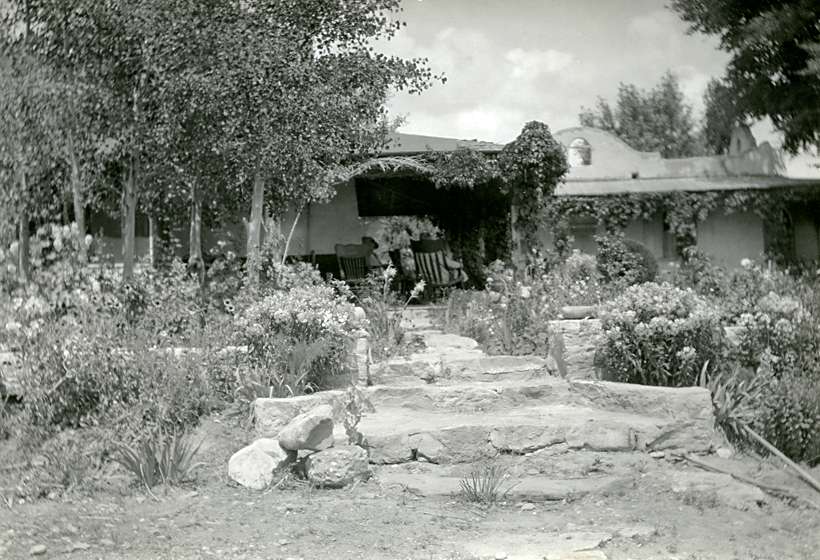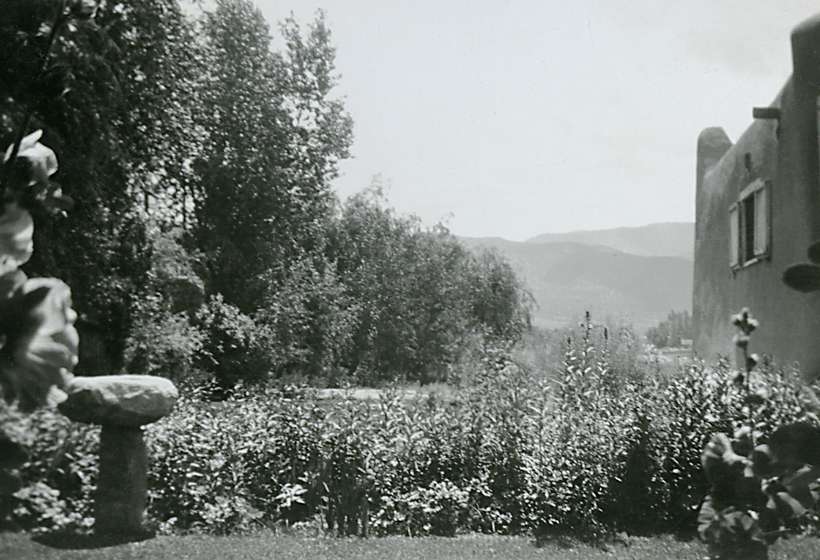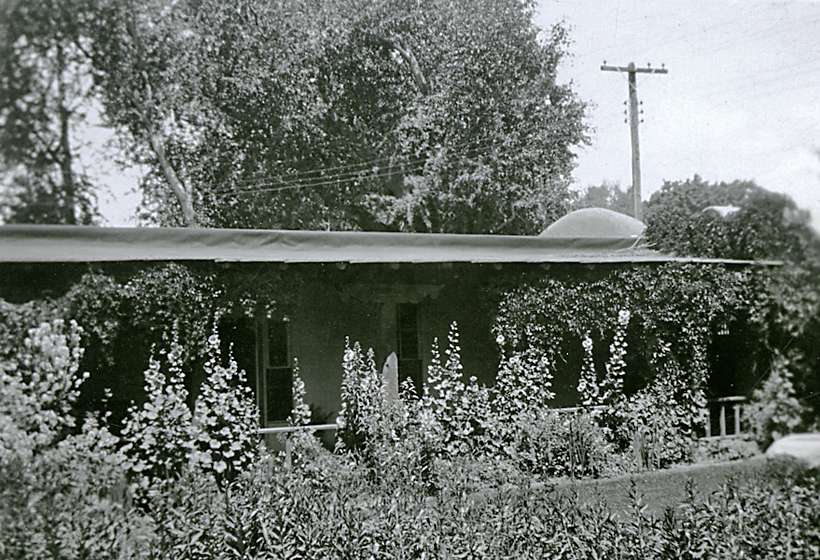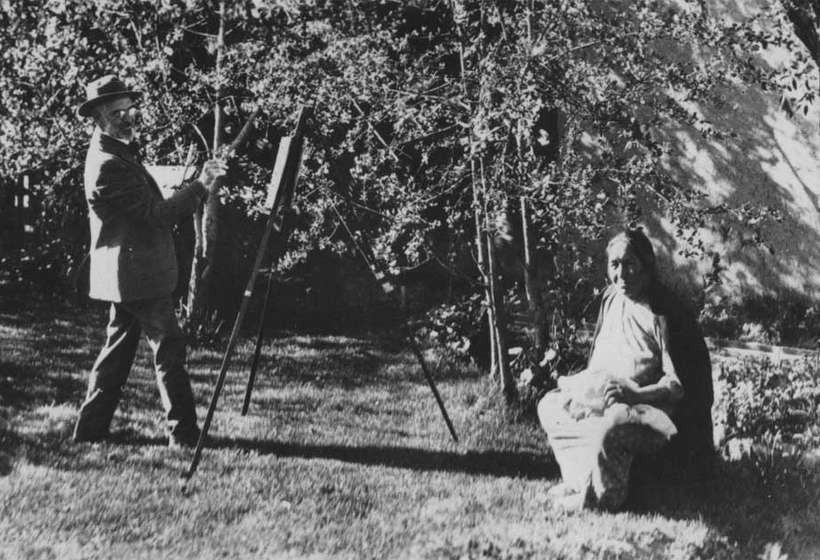Gardens / About
About the Gardens
Throughout the summer, the Couses and Sharps worked, painted, and entertained in their beautiful gardens. Unfortunately, the Sharp's garden was destroyed in the 1960s when their home was converted into a commercial art gallery. The Couse garden, however, still exists much as it was developed by Mrs. Couse between 1909 and 1929.
When the Couses purchased their adobe house on Kit Carson Road in 1909, Virginia immediately began to landscape the barren hillside that surrounded it. Over the years this became a famous garden and was considered the "Mother Garden of Taos". She left no formal plans for either the design or the plantings, and it is likely that they both simply evolved as circumstance and inspiration allowed. An extensive lawn was planted and flower beds were developed around the perimeter. By 1920, terrace walls of dry-laid stones were completed and a stone platform and garden seat were built overlooking the view of Taos Valley to the south.
Over the years Virginia acquired plants by mail order, exchanged seeds with friends, and gathered native plants on expeditions into the mountains. The Virginia Creeper that grows up the posts and along the entire length of the porch was started from seedlings that she asked her sister to send down to her from Oregon. Ben Lujan, Couse’s favorite model from Taos Pueblo, worked with Virginia in her garden when he was not posing, and he continued to care for the garden for many years after her death in late 1929.
Virginia's historic garden still exists but full restoration is an on-going project based on archival records in the form of vintage photographs, correspondence, early newspaper accounts, and the vivid memories of her namesake and granddaughter, Virginia.
Today, plein air painters are often seen painting in the garden.










